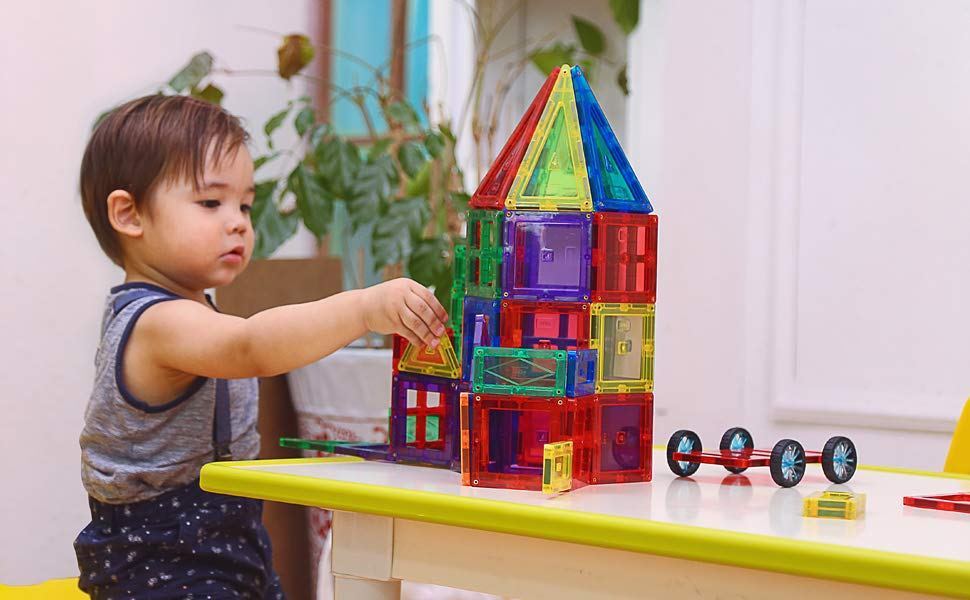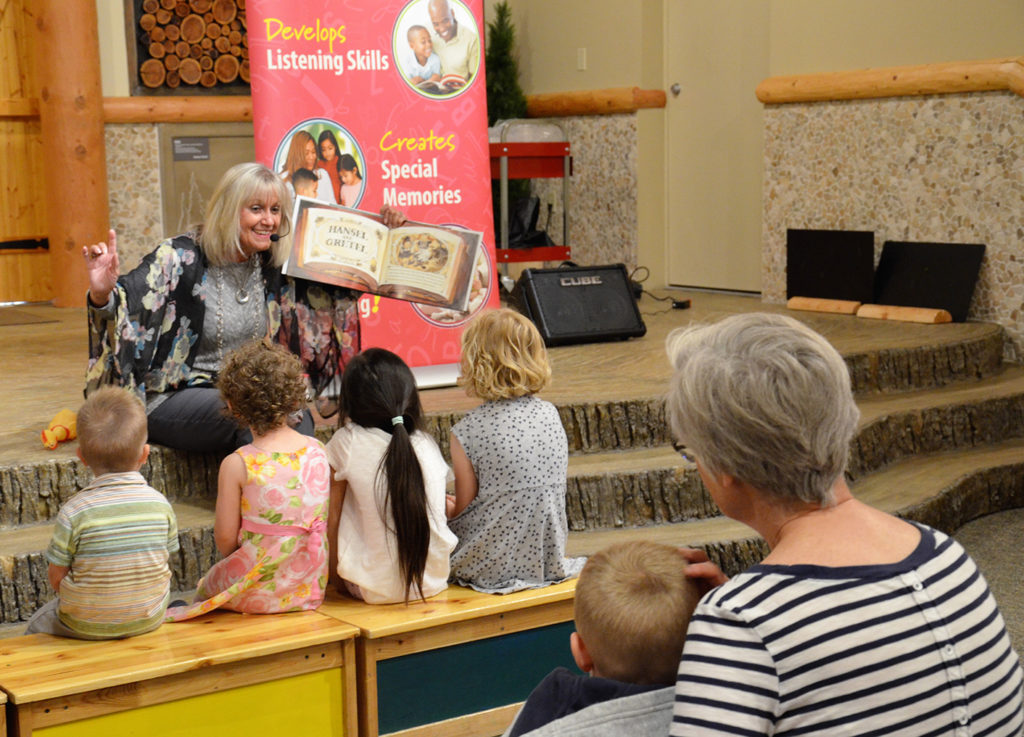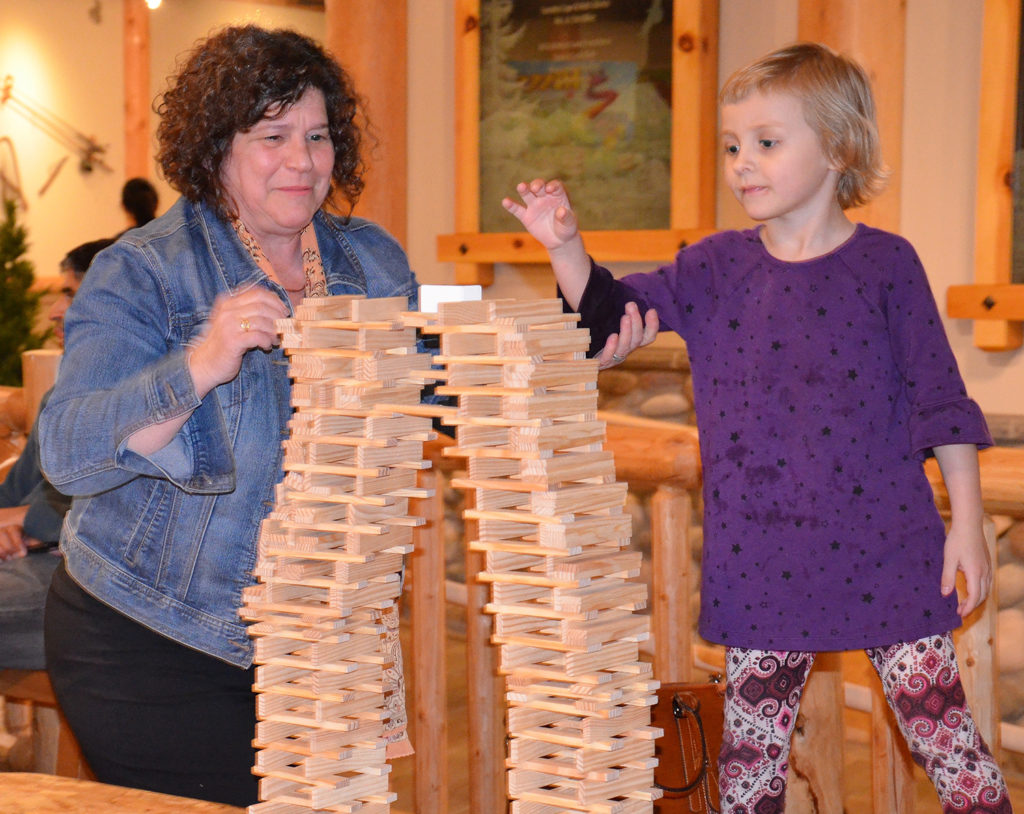
Shaping Preschoolers’ Geometry Skills
Written by: Clarissa Alfes
STEM (science, technology, engineering and math) has become a hot topic among early educators and families in more recent years. Many adults are wondering how to support children’s learning and excitement for STEM. Research suggests that engaging with geometry and spatial activities is a good starting point!
What is early geometry
Early geometry, also called ‘spatial sense,’ is an understanding of space and shape. Spatial sense includes knowing spatial objects such as shapes and lines, their relationships and positions in the spatial world (e.g., “next to,” “shorter,” “corner,” “left”) and transforming the objects in space (e.g., manipulating blocks or rotating shapes in your mind.) Spatial abilities are foundational for STEM and inquiry-based learning and are one of the key areas of early math development that families can work on at home.
Play with Toys
Playing with certain toys builds young children’s early math skills. Toys such as puzzles, blocks and shape tangrams provide an opportunity for children to explore and learn through play. This play has been linked to stronger geometry and spatial skills in young children. Toys for play-based spatial learning are:
1. Puzzles. Talk with your child about the edges and curves on the puzzle pieces and about the shapes of the pieces as you work toward completing the picture.
2. Blocks, Legos & Lincoln Logs. Ask your child to build structures using descriptions such as a “tall tower” and to recreate structures based on blueprints or models you build.
3. Tangrams. Support children to get creative in fitting shapes together and forming images. Challenge them to see how many different scenes and shapes they can create with the same tangrams.
4. Magna-Tiles. Have your child match designs that you construct and create patterns in the tiles. Support them in building 2D and 3D shapes while you label shapes, sizes and provide directions such as “on top of.”
5. Many others!
Bonus: try giving your child a problem to solve or creating a story that goes along with the spatial play. Evidence shows that adding storytelling to block-play makes the play more effective for early spatial learning (and language skills too!)
Spatial talk in everyday activities
Early geometry skills can be shaped through spatial “math talk,” when adults narrate during play and everyday interactions. Caregivers can name shapes they see in objects, use location words and gestures such as “below” or “left” and describe features of objects such as “curvy” or “short” during play and everyday activities. Activities to try with your child include:
1. Going on a shape hunt in the car, house or grocery store.Name shapes, sizes and features of objects you see in the environment (e.g., stop sign, cereal box) and ask your child to do the same.
2. Drawing, origami and painting during art time. Follow step-by-step directions of animal origami to create 3D forms together and spend arts and crafts time drawing shapes, lines and grids while narrating how they relate to each other.
3. Playing maze games and Tetris. Have your child race to solve games in the quickest way possible then see if they can solve the visual-spatial games in other ways too. Encourage your child to explain how they solved the problems and to use their own ‘spatial math talk.’
4. Following and drawing maps. Read maps with your child to complete a scavenger hunt, talking about directions while you walk between locations. Suggest drawing maps to familiar places from memory, including discussing landmarks and distances.
Museum Store
Imagine’s Museum Store is stocked with educational games and toys, many of which help develop math skills. The Museum Store is open during regular Museum hours and Museum members receive 10% off of purchases. You can stop in and shop without paying Museum admission. Our friendly staff are always happy to help you find the perfect gift.


